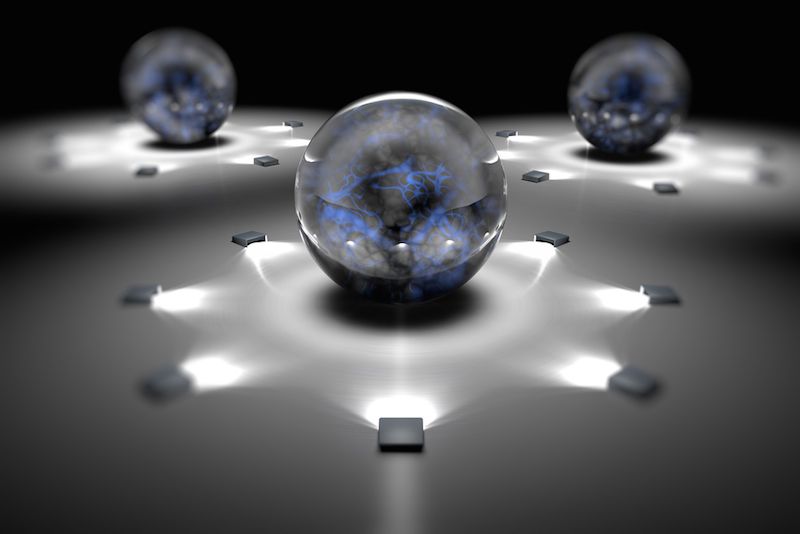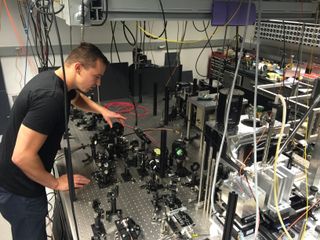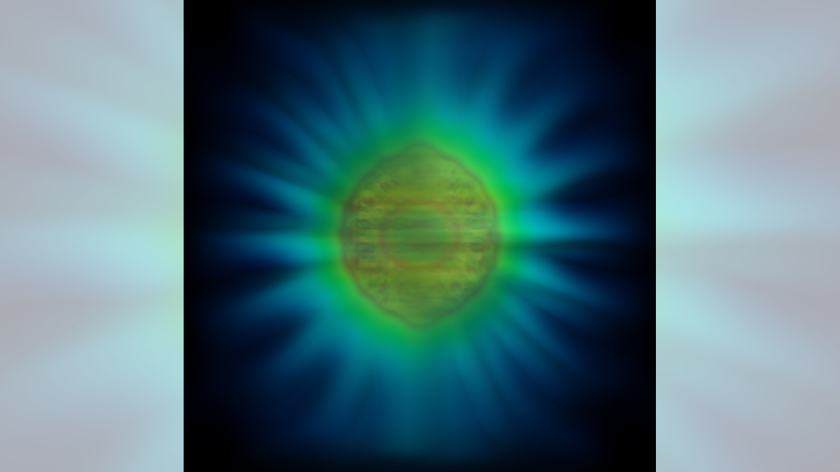'Spooky Action' Heats Up: Atoms Entangled at Room Temperature

The world of the very small can get pretty wacky — particles can be in two or more places at once, and even become entangled, wherein actions on one entity can affect its partners across the cosmos. Physicists have broken all kinds of records in proving the existence of so-called quantum entanglement, and now, they have done it again, coupling together thousands of atoms at room temperature.
Previously, these atoms could be paired only at temperatures cold enough to liquefy helium.
This new achievement could one day be applied to enable more sensitive magnetic resonance imaging (MRI) scans, superpowerful quantum computers and even unhackable quantum communications networks unhackable by any known current technologies, researchers say.
A fuzzy place
Quantum physics explains how all known particles behave. A key feature of quantum physics is that the universe becomes a fuzzy, surreal place at its very smallest levels. For example, atoms and other building blocks of the cosmos actually exist in states of flux known as "superpositions," meaning they can seemingly be located in two or more places at once. [Quantum Physics: The Coolest Little Particles in Nature]
One consequence of quantum physics is quantum entanglement, wherein multiple particles can essentially influence each other instantly regardless of how far apart they are. Albert Einstein dismissed this seemingly impossible connection as "spooky action at a distance," but decades of experiments have proven entanglement is real.
Entanglement may serve as the foundation of quantum communication networks that are theoretically perfectly secure against eavesdroppers, experts say. Entanglement is also key to quantum computing, which relies on quantum bits, or "qubits," that can be both "on" and "off" at the same time in their superposition state, unlike regular bits underlying conventional electronics, which can only be either on or off. If two qubits were to be entangled in their superposition state, it would mean there would be four bits' worth of storage. The more of these qubits scientists can entangle to work in unison, the more calculations a quantum computer can run simultaneously. In principle, previous research suggested that a quantum computer with 300 qubits could perform more calculations in an instant than there are atoms in the universe.
Sign up for the Live Science daily newsletter now
Get the world’s most fascinating discoveries delivered straight to your inbox.
Scientists would like to not only entangle microscopic qubits each made of just a few particles, but also macroscopic ensembles of huge numbers of particles. Macroscopic ensembles can generate much larger, more detectable signals when scanned than microscopic qubits can, said study co-author David Awschalom, an experimental physicist at the University of Chicago.
However, magnetism or heat can easily disrupt entanglement. To entangle macroscopic ensembles, previous research used super cold temperatures of about minus 454 degrees Fahrenheit (minus 270 degrees Celsius) and huge magnetic fields stronger than the kind used in conventional MRI scans.
Entangling big things
Now, scientists have entangled macroscopic ensembles at room temperature using magnetic fields as weak as those seen in refrigerator magnets. Furthermore, they achieved this entanglement in a commercial semiconductor material routinely used to make devices such as LEDs, the researchers said in the new study.

"Fabrication techniques that already exist in industry for working with this semiconductor can be used toward developing entanglement-harnessing devices,"Awschalom told Live Science.
The new technique uses infrared laser light, instead of frigid temperatures, to align the magnetic states of thousands of electrons and atomic nuclei on a wafer of silicon carbide, which is often used in devices by the semiconductor industry. It then uses electromagnetic pulses much like those used in MRI scans to entangle the particles in a space the size of 40 cubic microns, or about half the size of a normal red blood cell.
One potential application for this new technique could be quantum sensors, which take advantage of the sensitive, fragile nature of entanglement to exceed the sensitivity limits of traditional sensors, the researcherssaid. In addition, this new method allows room-temperature entanglement in bio-friendly silicon carbide; quantum-entangled silicon carbide could be used as part of biological sensors inside living organisms for more more sensitive MRI scans.
"We are excited about entanglement-enhanced magnetic resonance imaging probes, which could have important biomedical applications," study co-author Abram Falk, a research staff memberat IBM's Thomas J. Watson Research Center, said in a statement.
The scientists detailed their findings online Nov. 20 in the journal Science Advances.
Follow Charles Q. Choi on Twitter @cqchoi. Follow us @livescience, Facebook&Google+. Original article on Live Science.

Most Popular




